How to check the temperature sensor of a washing machine
 Thermal sensor is an internal element of the washing machine that is responsible for heating the water to a certain temperature and turning off the heating element. And if at one point the machine heats the water too much or doesn’t do it at all, then the cause of the breakdown may be the temperature sensor. We will talk further about how to check its functionality and, if necessary, replace it.
Thermal sensor is an internal element of the washing machine that is responsible for heating the water to a certain temperature and turning off the heating element. And if at one point the machine heats the water too much or doesn’t do it at all, then the cause of the breakdown may be the temperature sensor. We will talk further about how to check its functionality and, if necessary, replace it.
Types of sensors
One of three types of sensors can be installed in an automatic washing machine:
- gas-filled;
- bimetallic or
- thermistor.
Each of them differs in design, principle of operation, and therefore has its own characteristics when replacing and checking.
A gas-filled thermostat consists of two parts, the first is a metal tablet with a diameter of 20 to 30 mm and a height of up to 30 mm. This metal tablet is placed inside the tank of the machine so that it comes into contact with the water to measure its temperature. The second part of the sensor has the shape of a tube made of copper; it is connected to an external temperature controller located on the control panel of the machine. Gas – freon – is pumped into these parts of the sensor. Under the influence of water temperature, freon expands or contracts, which leads to the closing and opening of contacts going to the heating element.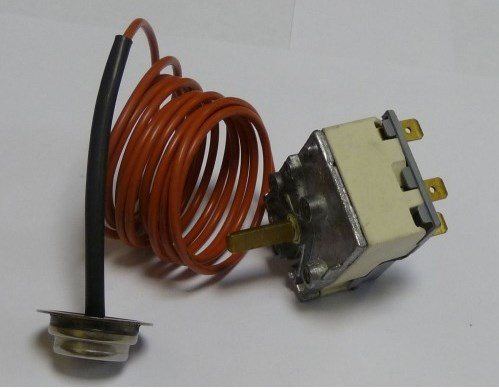
The bimetallic thermostat also has the shape of a tablet with a diameter of 20 to 30 mm and a height of up to 10 mm. Inside the tablet there is a small bimetallic strip. When the water is heated to the selected temperature, the plate bends, which leads to the closure of the contacts, and the heating of the water stops.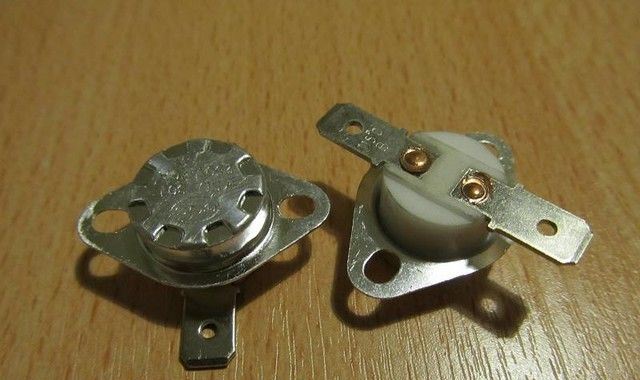
In the latest models of washing machines, a thermistor is installed as a temperature sensor. It is a metal cylinder with a diameter of about 10 mm and a length of 30 mm. Such a temperature sensor is attached to the heating element itself. The principle of its operation is not based on the mechanical operation of the elements, but on a change in resistance when heating water to the desired temperature.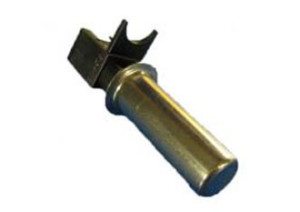
Checking the functionality of the sensor and replacing it
In order to check whether the thermostat of the washing machine is working, you need to get to it. Why do we first disconnect the machine from the electrical network? Now you need to disassemble the car itself. The easiest way is to “remove” the thermistor from the car, because it is located inside the Ten. In most machine models, the heating element is located at the bottom of the washing machine.
To remove the thermistor, you must:
- Open the back cover of the washing machine.
- Disconnect the wires from the sensor going to the external temperature controller.
- Loosen the screw holding the heating element.

- Remove the thermistor from the heating element.
Now that the sensor is removed, you need to take a multimeter and measure the resistance. We perform the following actions:
- set up the multimeter to measure resistance;
- We hook the multimeter probes to the sensor contacts. At a temperature of 200The sensor resistance is about 6000 Ohms.
- We lower the sensor into hot water and look at the change in readings on the multimeter as the temperature of the sensor changes. If the sensor is working properly, then the resistance will drop, and at a temperature of about 500C it will be equal to 1350 Ohms.
If the thermostat is faulty, it must be replaced with a new one.It cannot be repaired. We assemble the machine in reverse order.
To get to the gas-filled sensor, in addition to opening the back wall of the washing machine, you will also have to remove the front control panel. This is necessary in order to disconnect the outer part of the sensor, as shown in the photo.
Returning to the back of the automatic machine, we find a terminal with wires on the tank body. Carefully, so as not to damage the copper tube of the sensor, pull off the rubber insulation. Using a thin awl, carefully pick out the rubber seal around the copper tube and tighten it. Lightly press the base of the sensor inward so that it pops out of the groove. After this, we pull out the temperature sensor through the hole in the tank. We unhook the wire from the sensor and check its functionality.
The main malfunction in such sensors is the breakdown of the copper tube from which the freon comes out.. As a result, the performance of the sensor is impaired. To replace it, we buy a temperature sensor complete with a switch and install it in place, performing all assembly steps in the reverse order.
As for the bimetallic sensor, in order to get it out of the washing machine, as in the previous case, you need to get to the tank. And then disconnect the thermostat from the wires. Now we connect the sensor contacts to the multimeter probes and look at the resistance readings. Next, we heat the sensor in hot water to a certain temperature and see how the resistance changes; if it drops significantly, it means the sensor is working, otherwise it is not.
The main reason for the failure of a bimetallic sensor is wear of the plate. Replacing the sensor is quite easy; buy a new similar thermostat and install it in place of the old one.
Signs of sensor failure: main faults
The normal operation of the washing machine depends on the health of the temperature sensor. External signs of a breakdown of this machine part include the following:
- at any washing mode and at any selected temperature, the machine heats the water to boiling;
- During washing, the body of the washing machine becomes very hot, and hot steam comes out of the drum door.
Such a breakdown requires immediate repair, otherwise it may lead to the heating element burning out. A Ten's replacement It will cost much more than replacing the temperature sensor.
It is quite possible to replace the thermostat yourself. The most important thing is to remove the old temperature sensor and buy exactly the same one in the store. Happy renovation!
Interesting:
6 reader comments
Add a comment Cancel reply
Categories
Washing machine repair


For buyers

For users

Dishwasher



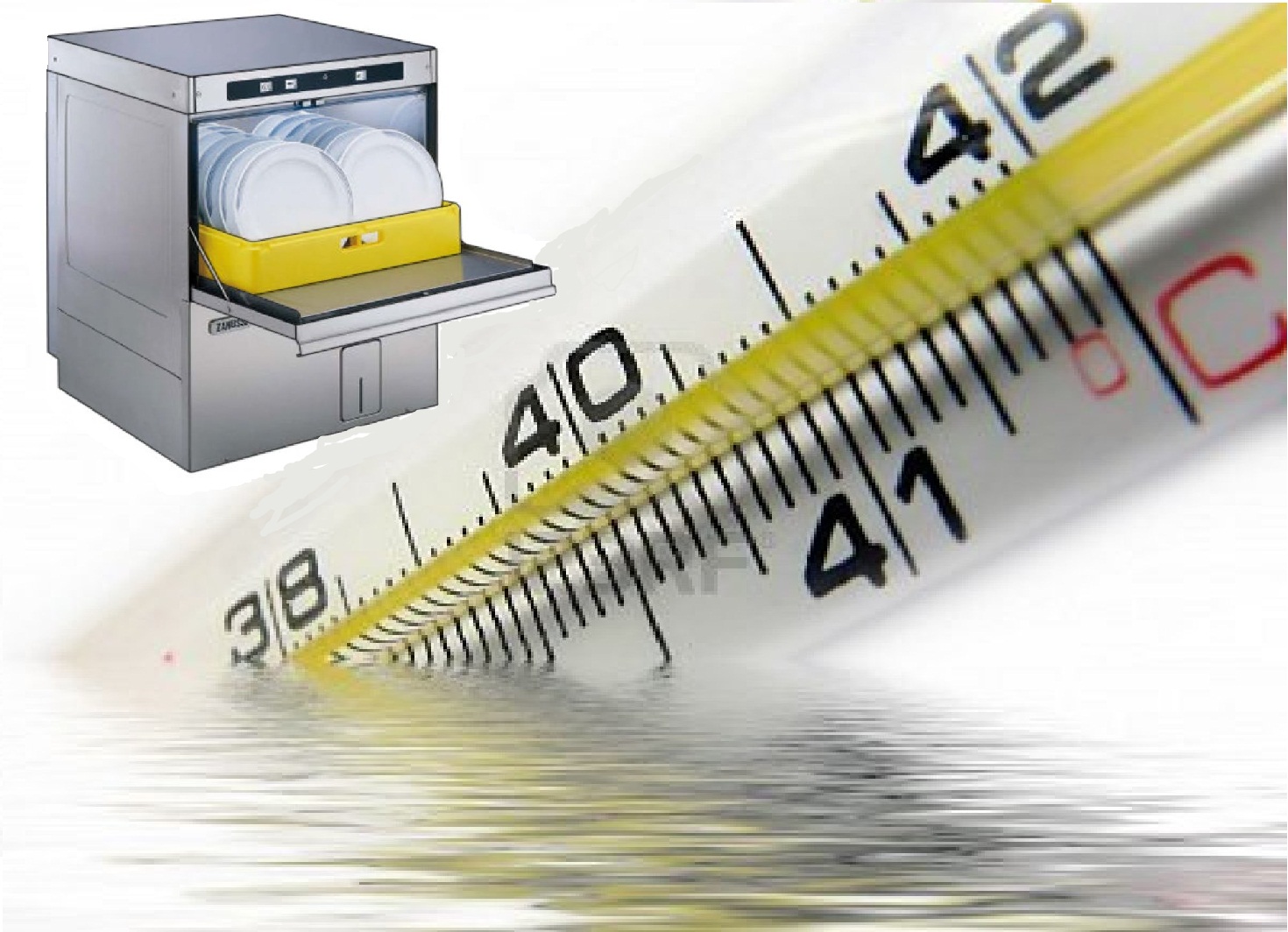


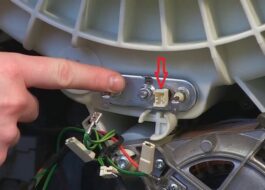










Thank you, clear and understandable
Everything is clear and understandable, thank you.
By specific brands of SMA, the resistance actually varies.
This sensor is from a Lada
Super
What if the water heats up, but not to the required temperature? We set it to 60, and the water is barely warm. I checked the thermal resistance of 11 kOhm, it decreases when heated. Ten 30 Ohm, normal. Where to start your search? Samsung wf-r861. Thanks in advance :)